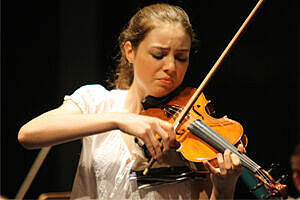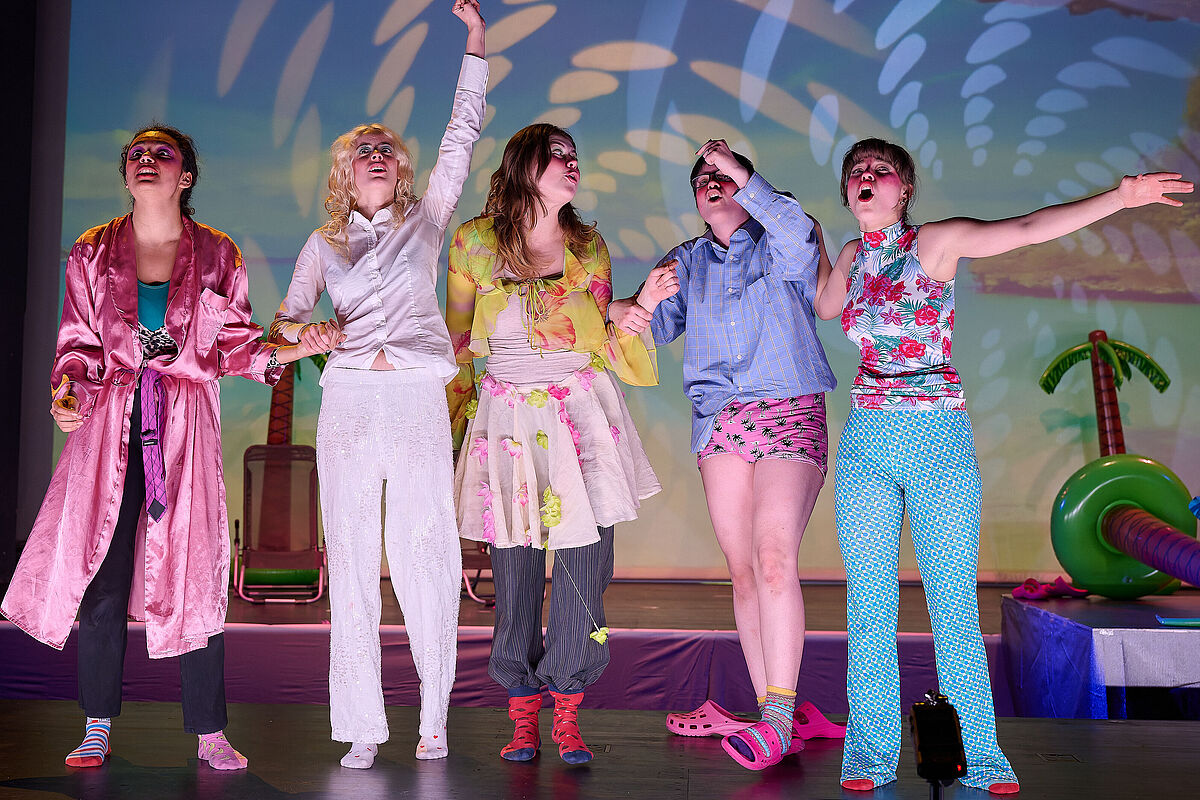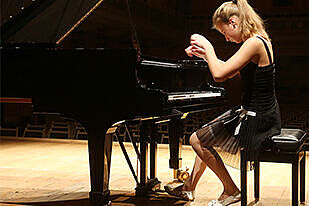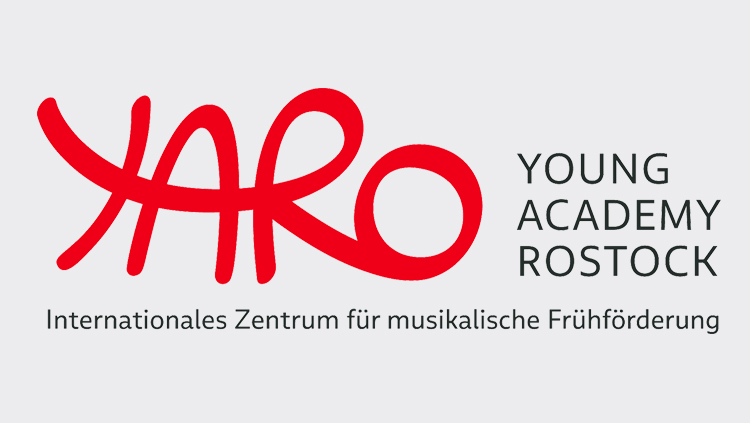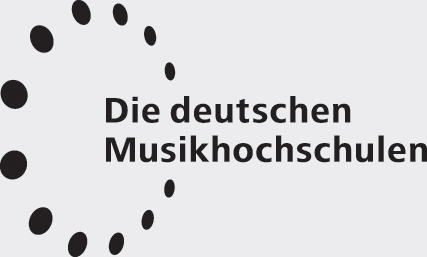Bachelor's Course Winds
Entrance Requirements
If you are interested in studying one of the brass instruments - flute, oboe, clarinet, bassoon, trumpet, trombone, tuba or horn - this course is exactly what you are looking for.
Applicants who wish to enrol at the University of Music and Drama have to provide proof of entitlement (normally: “Abitur”– general/specialized higher education entrance qualification or foreign equivalent). As an exception for music studies and on request, this document might be complemented or replaced by a certificate verifying the passed entrance examination to the Hochschule für Musik und Theater Rostock. Applicants also need to have completed their compulsory education or will presumably have done so before they start their studies.
Course Profile
- Official Length of the programme: four years, 240 ECTS-credits
- Start of the course: winter semester as well as summer semester
- Application period: 1 October to 15 November for the summer semester. 1 March to 15 April for the winter semester.
- University Degree: Bachelor of Music
- Teachers
The course provides a basis for professional work in symphony and chamber orchestras or chamber music ensembles. Some graduates will also teach at music schools. Those students who stand out through artistic excellence might either pursue their studies and apply for a Master’s course (and maybe also qualify for the 3rd artistic cycle, “Konzertexamen”) or start their career immediately.
After 8 semesters, career opportunities can usually be discussed with the principal instructor who will give appropriate advice. Master’s courses in Orchestra, Chamber Music and Music Education provide an interesting option for those graduates in Wind Instruments who wish to enhance their studies.
Foreign students whose native language is not German must provide evidence that their knowledge of German is sufficient for their chosen course.
For the Bachelor’s degree (Winds), students are required to have reached level B2 as defined by the Common European Framework of Reference for Languages.
Applicants’ linguistic competence will be established during the aptitude test.
You will find further information in the Aptitude Test Regulations and Matriculation Regulations (only in German) of Rostock University of Music and Drama.
Please apply via our application website by uploading the required documents and application video by 15th of April for the next winter semester and 15th of November for the next summer semester.
In order to take part in the aptitude test part 1, you need to submit your application as well as three videos according to the regulations of the study course you are applying for.
Please submit 3 uncut videos (one take, uncut, no post-editing) of 3 works/work parts differing in character and epoch with a higher level of difficulty (total length per video approx. 10 min.).
For the online procedure, please upload three uncut videos with works of different character and different stylistic periods with a high level of difficulty (total length of each video approx. 10 min).
Bugle
- W. A. Mozart, Konzert Nr. 3 in Es-Dur KV447 oder Nr. 2 in Es-Dur KV417
- L. v. Beethoven, Sonata in F-Dur op. 17
- Franz Strauss, Nocturno oder Konzert op. 8
- Camille Saint-Saëns, Morceau du Concert op. 94
- Paul Hindemith, Sonate in F 1939
Trumpet (no aptitude test for the winter semester 2025/26)
- Arban, Variationen über ein Thema von Norma (Bellini) oder Der Karneval in Venedig
- Arutunian, Konzert As-Dur
- Balay, andante er Allegretto oder Prelude er Ballade
- Bozza, Badinage
- Gaubert, Cantabile er Scherzetto
- Hansen, Sonata in Es-Dur
- Hummel, Konzert in Es-Dur
- Neruda,Konzert in Es-Dur
- Pares, Premier Solo
- Pennequin, Morceau de Concert
- Tomé, Fantasie
Trombone
- G. Kopprasch, Etüden
- B. Grigoriew, Etüden
- F. David Concertino
- N. Rimski-Korsakow, Konzert 1. und 2.
- A. Guilmant Morceau Symphonique
- G. P. Telemann Sonata
- C. Saint-Saëns, Cavatine
- L. Grøndahl Konzert
- H. Tomasi Konzert
- E. Sachse Konzert
- A. Lebedjew Konzert 1&2
- E. Bozza New Orleans
Tuba
- Marco Bordogni Bel Canto Studies No. 4
- Benedetto Marcello Sonata in f major 1st and 2nd movement
- Aleksej Lebedjew Concerto No. 1 for tuba and piano
- Georg Friedrich Händel „Sonate g-moll“
- Thomas Stevens „Variationen in olden style“
Examples of works for woodwinds
Flute
- Concerts by Stamitz, Quantz, Hofmeister or Mozart
- J. S. Bach or G.F. Händel, Sonatas
- C. Reinicke, Ballade
- A. Roussel, Andante et Scherzo op. 51
- G. Fauré, Fantaisie op. 79
- P. Hindemith, Sonata or 8 pieces for flute solo
- E. Varése, Density 21,5
- R. Dick, Flying Lessong
Oboe
- Karl Mille, Etudes
- A. Lebrun, Concerts
- Vivaldi, Sonatas or Concerts
- F. Krommer, Concerts
- J. Haydn, Concert C-Dur
- R. Schumann, 3 Romances op. 94
- C. Saint Saëns, Sonata op.166
- P. Hindemith, Sonata
- Telemann, Fantasies
- G. Schreck, Sonata
- B. Britten, 6 Metamorphoses after Ovid op. 49
Clarinet
- C. M. v. Weber, Concertino Es-Dur
- R. Schumann, Fantasiestücke, op. 73 for clarinet and piano
- P. Hindemith, Sonata
- W. Lutoslawski, Dancing Preludes
- F. Krommer, Concert Es-Dur
- F. Danzi, one concert
- I. Strawinsky, 3 pieces for clarinet solo
- J. Brahms, one Sonata from op. 120 F-Moll or Es-Dur
- F. Poulenc, Sonata
- C. Saint-Saëns, sonata for clarinet ans piano op. 164
- E. Bozza, Fantaisie Italienne
- H. Sutermeister, Capriccio for clarinet solo
Bassoon
- A fast and slow movement of a baroque work such as Telemann, Boismortier or Vivaldi
- A movement of a classical concerto such as Vogel, Danzi, Vanhal, Mozart
- A work or movement from romanticism or classical modernism to contemporary music
Each video has to start with a short introduction (your name, your application number, the title of the piece you are about to present). The video has to be filmed in one take and live, which means the material must not be cut or post-edited. There is no need for professional video production. Videos taken with your mobile phone are absolutely fine. However, you should be clearly visible and audible whilst playing your instrument. The video should be framed to show the whole person.
You will receive an e-mail with the results of part 1 of the aptitude test. If you have passed part 1 of the aptitude test, you will be invited to part 2 which will take place in June for the winter semester and in January for the summer semester. The exact dates will be published under apply for studies.
Requirements for the aptitude test part 2:
- Please perform the same pieces again that you have applied with in part 1.
You will also have to take tests in your respective compulsory subjects (Piano and Music theory). Additionally, foreign students have to pass a German proficiency test.
We look forward to your application.
Application
Click here for the ONLINE APPLICATION and the dates of the APTITUDE TEST.
A fee of 50 Euro is charged for processing your application for admission. Please transfer this amount when you submit your application.
We will gladly advise you personally!
Mrs Dörtje Peters
Study Office for Music
fon +49 381 5108 220
fax +49 381 5108 201
doertje.petershmt-rostockde
Bertold Stecher, Head of Brass
bertold.stecherhmt-rostockde
Prof. David Petersen, Head of Woodwind
david.petersen@hmt-rostock.de
Please visit our University Information Day in April!
Back to DEGREE COURSES

